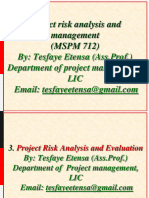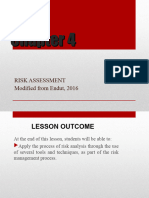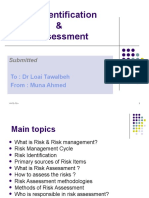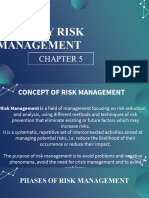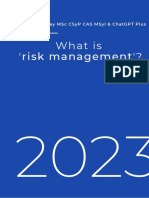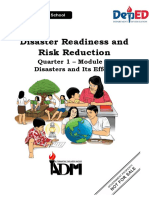0% found this document useful (0 votes)
22 views12 pagesRisk Assessment Module Chapter 3
This document discusses risk analysis and evaluation, focusing on qualitative and quantitative risk analysis methods. It introduces tools like the Probability and Impact Matrix for qualitative analysis, which helps prioritize risks based on their likelihood and impact, and outlines quantitative techniques such as Monte Carlo simulations and decision trees for more precise risk assessment. Additionally, it covers various analytical tools like SWOT and PESTLE analyses, as well as risk evaluation criteria to aid organizations in managing risks effectively.
Uploaded by
mfbelarminoCopyright
© © All Rights Reserved
We take content rights seriously. If you suspect this is your content, claim it here.
Available Formats
Download as DOC, PDF, TXT or read online on Scribd
0% found this document useful (0 votes)
22 views12 pagesRisk Assessment Module Chapter 3
This document discusses risk analysis and evaluation, focusing on qualitative and quantitative risk analysis methods. It introduces tools like the Probability and Impact Matrix for qualitative analysis, which helps prioritize risks based on their likelihood and impact, and outlines quantitative techniques such as Monte Carlo simulations and decision trees for more precise risk assessment. Additionally, it covers various analytical tools like SWOT and PESTLE analyses, as well as risk evaluation criteria to aid organizations in managing risks effectively.
Uploaded by
mfbelarminoCopyright
© © All Rights Reserved
We take content rights seriously. If you suspect this is your content, claim it here.
Available Formats
Download as DOC, PDF, TXT or read online on Scribd
/ 12
